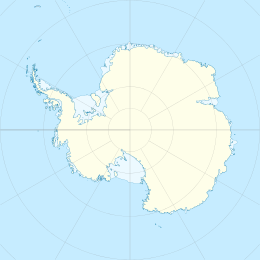geo.wikisort.org - Island
The Inaccessible Islands ("Islas Inaccesibles" in Spanish) are a group of small precipitous islands ranging from 120 to 215 m (394 to 705 ft) high, the westernmost features of the South Orkney Islands, lying 20 km (12 mi) west of Coronation Island in Antarctica. They were discovered in December 1821 by Captain George Powell, a British sealer in the sloop James Monroe, though it is possible they are the "Seal Islands" seen by Nathaniel Palmer a year earlier. The islands were so named by Powell because of their appearance of inaccessibility.[1] They are considered part of the British Antarctic Territory by the United Kingdom and part of the Province of Tierra del Fuego by Argentina.
 Inaccessible Islands Location in Antarctica | |
| Geography | |
|---|---|
| Location | Antarctica |
| Coordinates | 60°34′S 46°44′W |
| Highest elevation | 215 m (705 ft) |
| Administration | |
| Administered under the Antarctic Treaty System | |
| Demographics | |
| Population | 0 |
Important Bird Area
The islands have been identified as an Important Bird Area (IBA) by BirdLife International because they support a large breeding colony of southern fulmars (50,000 pairs). Other birds nesting at the site include chinstrap penguins (1000 pairs) and Antarctic shags (100 pairs).[2]
See also
- List of Antarctic islands south of 60° S
References
- "Inaccessible Islands". Geographic Names Information System. United States Geological Survey. Retrieved 6 July 2012.
- "Inaccessible Islands". BirdLife data zone: Important Bird Areas. BirdLife International. 2013. Retrieved 7 January 2013.
![]() This article incorporates public domain material from the United States Geological Survey document: "Inaccessible Islands". (content from the Geographic Names Information System)
This article incorporates public domain material from the United States Geological Survey document: "Inaccessible Islands". (content from the Geographic Names Information System)
На других языках
[de] Inaccessible Islands
Inaccessible Islands (aus dem Englischen sinngemäß übersetzt Unzugängliche Inseln) sind eine Gruppe kleiner, unbewohnter Inseln im Archipel der Südlichen Orkneyinseln im Südpolarmeer.- [en] Inaccessible Islands
Другой контент может иметь иную лицензию. Перед использованием материалов сайта WikiSort.org внимательно изучите правила лицензирования конкретных элементов наполнения сайта.
WikiSort.org - проект по пересортировке и дополнению контента Википедии